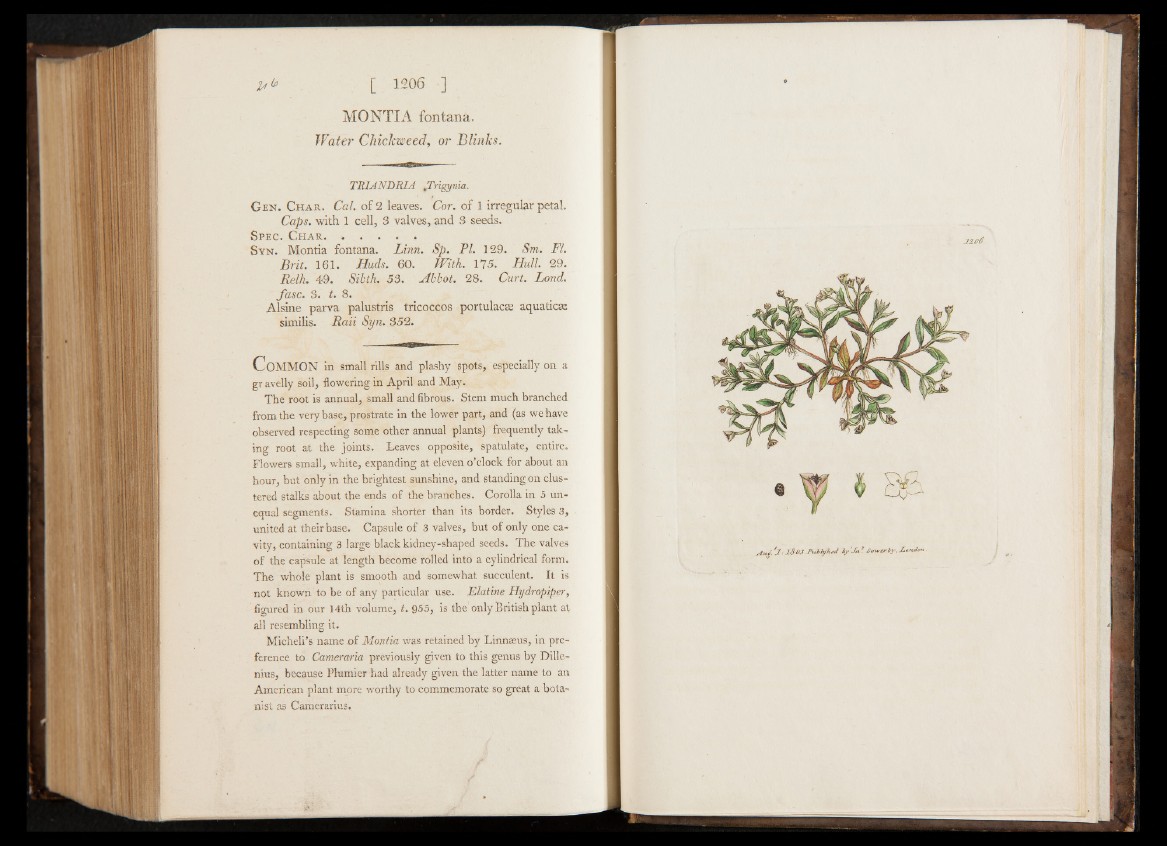
pt (o [ 1206 ]
MONTIA fontana.
Water Chickweed, or Blinks.
T R IA N D R IA J'rlgynia.
G en. Char. Cal. of 2 leaves. Cor. of 1 irregular petal.
Caps, with 1 cell, 3 valves, and 3 seeds.
Spec. Char. . . . . .
Syn. Montia fontana. Linn. Sp. PL 129. Sm. FI.
Brit. 161. Buds. 60. With. 175. Hull. 29.
Relh. 49. Sibth. 53. Abbot. 28. Curt. Lond.
fasc. 3. t. 8.
Alsine parva palustris tricoccos portulacse aquaticas
similis. Raii Syn. 352.
C o m m o n in small rills and plashy spots, especially on a
gr avelly soil, flowering in April and May.
The root is annual, small and fibrous. Stem much branched
from the very base, prostrate in the lower part, and (as we have
observed respecting some other annual plants) frequently taking
root at the joints. Leaves opposite, spatulate, entire.
Flowers small, white, expanding at eleven o’clock for about an
hour, but only in the brightest sunshine, and standing on clustered
stalks about the ends of the branches. Corolla in 5 unequal
segments. Stamina shorter than its border. Styles 3,
united at their base. Capsule of 3 valves, but of only one cavity,
containing 3 large black kidney-shaped seeds. The valves
of the capsule at length become rolled into a cylindrical form.
The whole plant is smooth and somewhat succulent. It is
not known to be of any particular use. Elatine Hydropiper,
figured in our 14th volume, t. 955, is the only British plant at
all resembling it.
Micheli’s name .of Montia was retained by Linnaeus, in preference
to Cameraria previously given to this genus by Dille-
nius, because Plumier had already given the latter name to an
American plant more worthy to commemorate so great a botanist
as Camerarius.